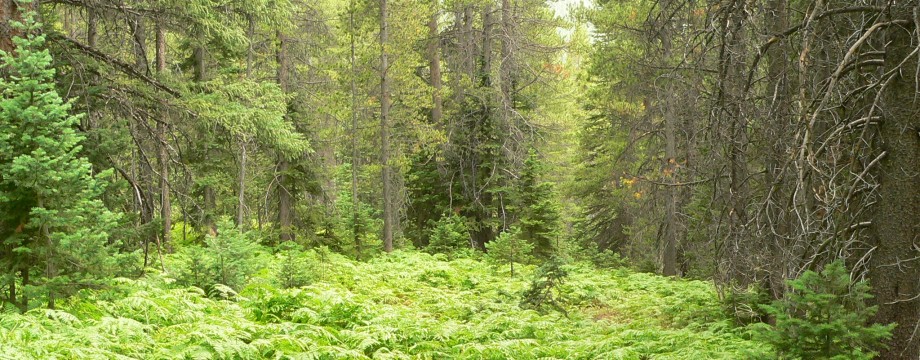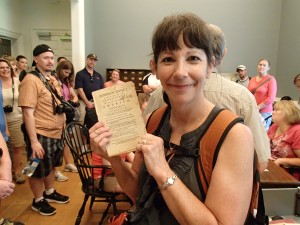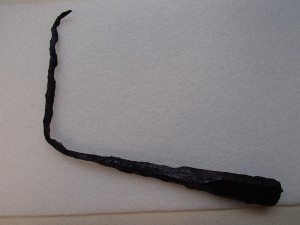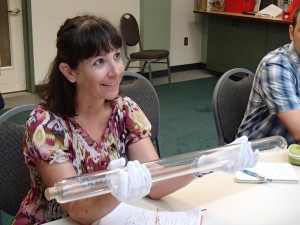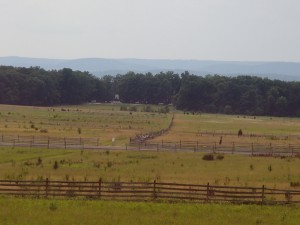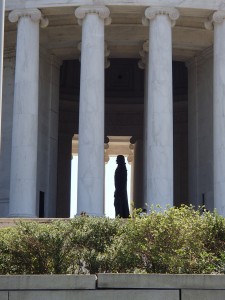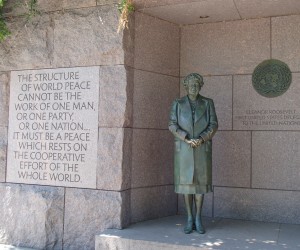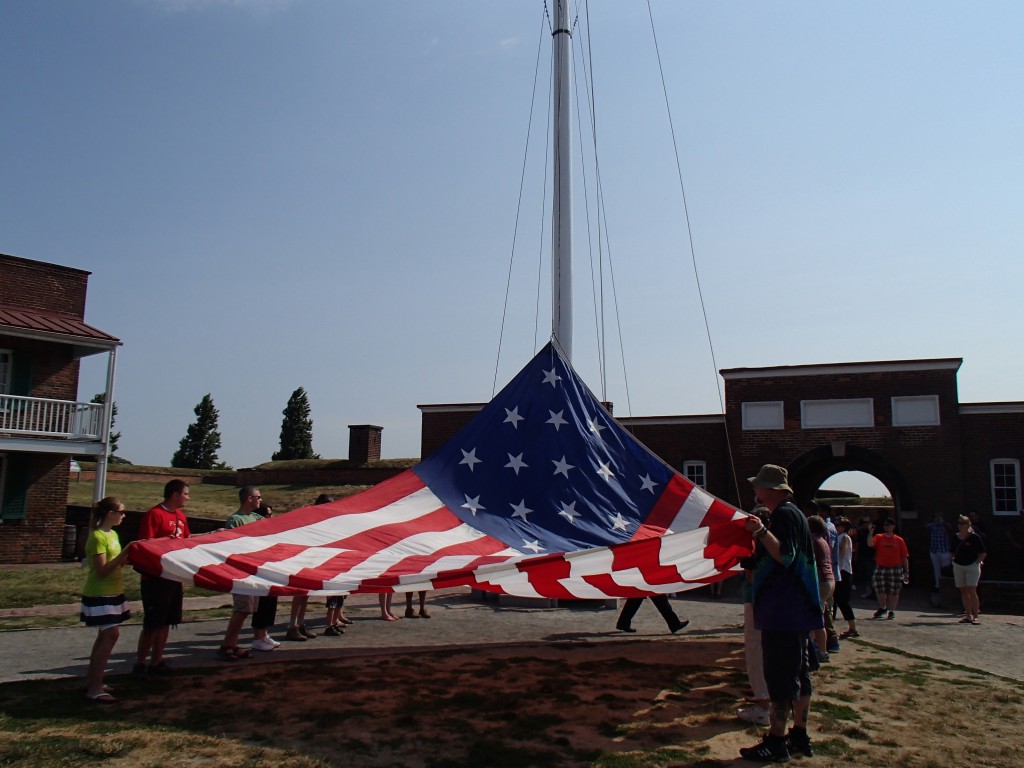I’m just back from ten days in Philadelphia and Washington, D.C. with thirty-one teachers and a terrific professor as our guide, mentor and teacher. We all read and wrote papers all winter to prepare for the trip – focusing on the Revolutionary War and the writing of the Constitution.
Here are highlights from my trip:
Tuesday, June 19 – National Constitution Center
The National Constitution Center is a wonderful place for kids and adults. This is not a museum. This is an interactive center where history is taught by technology and hands-on learning. Visitors hear, see and participate in history and civics through audio, video, games and experience. Our first taste of the Center was a production called Freedom Rising. We were in a tall, round theater. Around the top of the theater is a 360 degree movie screen, the floor in the center also served as a screen as well. A woman with a powerful and expressive voice told the story of how freedom rose from the colonies and the hearts in Philadelphia to create America. It was powerful and moving and a great way to start the day.
After the presentation, we had a short guided tour of the Center and then we were left on our own to explore. I especially enjoyed the Signer’s Hall. This room is the only area in the center that isn’t infused with technology. It’s a large room filled with life-sized statues of the 42 signers of the Constitution. The men are standing singularly and in groups. Some are engaged in positive conversations with other signers. A few are arguing. As I walked among these men, I was able to ‘size them up’ and make contact with them on a human and personal level. While I struggle with liking George Washington based on what I’ve learned about him, I stood beside him and looked up to meet his eyes. Respect came naturally at that moment. Turning around, I met James Madison. He is my height, his gentlemanly formal leather shoe smaller than my own clunky sneaker. I stood next to him and realized that his intelligence and depth was certainly great. He must have been even more commanding in his demeanor and presence than Washington as he had to overcome his own small size in a world of big men.
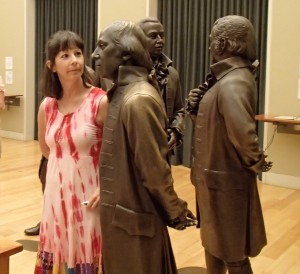
I touched the hand of Ben Franklin, sitting down and certainly old and a bit frail. I wished that he would speak to me and allow me to sit and chat. Behind Franklin stood Gouvenor Morris, his peg leg firmly set on the floor, his hand extended in conversation. In my short meeting with him I didn’t see the attraction of this ladies’ man, but perhaps if I’d been able to hear his voice and see the twinkle in that eye, I would have been smitten myself. I certainly appreciate the strength of his convictions and the contribution to my on 21st Century world he had made.
Each of the 42 signers of Constitution are present in this room. I would have liked to spend more time than I did in this room, even though I returned to it two times after the first. I found the other live humans in the room boorish and distracting in contrast to the riveting men in brass.
Travelling on in the Constitution Center I enjoyed several exhibits. Throughout the hall were interactive touch screens that gave a date and the question, “Could you have voted in ___?” It was fun to realize that when I chose Wyoming as my state, I wasn’t immediately denied the right to vote due to my gender.
Another terrific interactive site was Election Central. When I entered the voting booth the touch screen asked me to choose three current topics to focus on (the economy, health care, abortion, taxes, gun control…) Then the screens took me through several questions, asking my opinion on different aspects of each topic. At the end, I got a screen that showed me how the presidential candidates stand in relationship to my own thoughts. I’m really glad that this site is also available online, so that I can do this exercise with my students as we prepare to understand the election in November. (electnext.com)
The last exhibit that sparked my interest was a model of the three branches of government and a visual explanation of checks and balances. Based on this exhibit, I want to go home and create a similar kind of model so that we can act out how checks and balances work. It was set up as a three sided teeter-totter. Each branch of the government was represented with architectural models of the buildings that house that branch at the end of each of the three spokes. The exhibit didn’t move, but at the end of each spoke there was a computer screen that showed how when the congress passed a law, they pulled the teeter-totter down to give them the power. Then the president would step up and veto the bill, and pull the balance toward him. In another example, the Judicial Branch pulled the weight down as they declared something unconstitutional. I can picture how terrific this exercise will be with 5th graders. With a little help from my handy husband, I’m going to create a working model. Then as we discuss what powers each branch has power over the other, I can have them check and balance themselves out to create a government of equality and respect.
I appreciated the resources that are available to us through www.constitutioncenter.org and I have decided that I need to do something wonderful in my class on Constitution Day, September 17th!
Wednesday, June 20 Independence Hall and the most historic square mile in America
Someone said we walked 8.5 miles today within the most historic square mile in America. We spent time at Congress Hall. It is really quite humbling to be in the rooms where the first Congress met and hammered out the everyday workings of American government. Most of the furniture pieces are reproductions or in keeping with the time period but not the original pieces, but the building! The building has heard George Washington’s voice. The floor has supported the feet of Hamilton and Jefferson. As I slid my hand down the banister coming downstairs from the Senate chamber it occurred to me that my hand was now where Madison’s had been. Or Patrick Henry. Or Alexander Hamilton. Yikes. It gave me goose bumps. A part of my brain was telling me that I was being silly and geeky by feeling that way about a stair rail – but I just told that cynical voice to hush. It was a great feat to construct a new kind of government and get it started. The men who accomplished this did so with fervent dedication and energy. I don’t see anyone today as capable or deep thinking who could accomplish the like.
After we left Independence Hall, we visited the American Philosophical Society. It was established in 1743 by Benjamin Franklin as a learning society. The APS publishes the oldest continuous scholarly magazine in the country, Transactions. The Society holds the largest collection of Thomas Paine writings and the journals of Lewis and Clark. It is a library of primary documents for scholars around the world. Many parts of the Society’s collections have been digitized and are available online. ( http://www.amphilsoc.org ) There are lots of great portraits as well.
I have enjoyed teaching my kids about Thomas Paine. For the past two years I have done a short unit called “Valley Forge: Would You Have Quit?” (from The DBQ Project – a great way to teach history, reading and writing!!) with my 5th graders. One of the primary documents in that lesson is an excerpt from Thomas Paine’s The American Crisis. Today at the APS, I got to hold an original copy of Paine’s Common Sense. It was actually a very stunning moment. I can’t wait to teach the Valley Forge DBQ again. I will augment it with the contemporary copy of Common Sense that I bought and I will share the picture of me holding Common Sense with the kids and have even more to say about how powerful actions and words can be. ( Not to mention that I have now been to Valley Forge and have a deeper understanding of the time and place, hardships and sacrifice of the place!)
Thursday, June 21, 2012 – Where Washington crossed the Delaware, Trenton and Princeton
“We crossed with almost infinite difficulty” Henry Knox in describing the crossing of the Delaware River on Christmas, 1776.
The river didn’t look that formidable to me today, June 21, 2012. It was 101 degrees with clear skies. I had good shoes and an air conditioned bus. Actually, it was pretty difficult to picture ice floes and men with shoeless, bloody feet crossing the river in the dark. But wait. Eighteen canons, horses, equipment and 2400 men? On those flat bottom Durham ferries? Maybe it wasn’t easy. Stare a little longer at the strong current running in that river. Taking orders from a man I respect but who at the same time has lost ground and been defeated at Long Island, Harlem Heights, Fort Washington, Fort Lee? A man who has asked me to retreat across all of New Jersey?
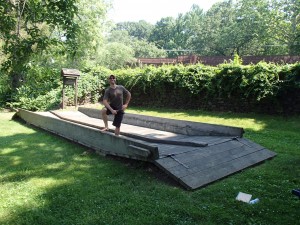
This is the kind of craft Washington’s men would have used to cross the Delaware River on Christmas night 1776.
Now I spend time thinking about why I would choose to take orders from this man. Perhaps it is the fear of the cat of nine tails. Perhaps it is pride and honor that won’t allow me to let my family down. Perhaps it is more my unsquelchable belief that I should be the determiner of my fate, not George III an ocean away. The soldiers at the Crossing were there by choice. Others had deserted, going home to their real lives. The men who crossed were determined and desperate. Resolved and resolute. They had to be to survive it.
The battle, I learned, was not huge in terms of military position or for the defeat itself. What was huge about winning at Trenton and Princeton was the morale boost it gave the Americans. Loyalist Richard Creswell summed it up by saying, “The minds of the people are much altered.”
Last year I made a large map of Boston, Concord and Lexington and my students and I acted out, using the Revolutionary Army men I’d bought, the actions of all the sides for the Battles of Concord and Lexington. We moved Revere and Dawes along their routes as the Regulars marched, went to North Bridge, then turned around and desperately retreated to Boston. The lesson was fun and they learned a lot. Now I’ll go home and make a new map. It will be of the Delaware River, Trenton and Princeton. I think I will print some of the pictures I took of the River, of the Ferry House, the field by the Clark house where the Battle of Princeton took place, and attach them to the map before I laminate it. We can learn about the 10 crucial days that saved the Revolution. I can’t wait!
Friday, June 22, 2012 Franklin Institute
OK, so I know I’m not the brightest crayon in the box, but I really thought that Franklin’s lighting rod would be shiny silver and straight and tall. It never occurred to me that the lightening rod I’d heard so much about would be blackened and burnt, twisted and bent. Duh! It was hit by lighting. The chemical makeup of the rod itself changed in an instant when the lightening and its electricity surged through it. I got to hold it. Franklin held it, too!
While we were there, we also got to pass around and hold several other artifacts including an electrostatic tube. The tube was a thick, hand blown glass tube with a cork in the end. Franklin would rub cotton on the tube and charge it with static electricity. Then, by inserting a wire into the cork, the charge could be transferred into a Leyden jar – or a set of them- creating a battery. Cool, huh?
“Wish not to live long, but to live well.” – B. Franklin
Philadelphia Museum of Art
I find myself wishing that I could be one of the children in the book From the Mixed Up files of Mrs. Basil E. Frankweiler so that I could live for a few weeks in an art museum. Our guide, Rebecca, was wonderful, and really modeled for me ways that I am capable of bringing art to my students even though I am basically a moron about art. She didn’t get snobbish about artists or periods or brush strokes. She merely had us spend time with a painting, seeing what we could see. She modeled my old friend See, Think and Wonder to really see a painting and feel how it affected me, then discuss how my response was different and the same as that of the others. I can do this!
A cool aspect of the whole day is that the museum has available resource packets for teachers. I bought one, which had been written by our guide (she signed it for me, too!), that focuses on incorporating art into language arts instruction. A second packet with posters of some of the paintings we saw today is also available. I’m ordering that one right away as well. I am feeling really confident that I can use both of them as well as the photographs of pictures that I took to teach across the curriculum. I’m thinking I need to set up some self-guided centers for the kids to work on with the prints also. Maybe I’ll kick it off by reading The Mixed up Files!
Saturday, June 23, 2012 Valley Forge
Baron Von Steuben is the most colorful and important character of Valley Forge in my opinion. Surely the soldiers who endured and didn’t die or desert need accolades. Their stories of hardship and determination eclipse most of the experiences any 21st century person has ever had in terms of perseverance, courage and self-sacrifice. Von Steuben is a horse of a different color in every aspect.
Von Steuben learned his trade as a Prussian officer under Fredrick the Great. Ben Franklin met him in France when Von Steuben came looking for a job. Franklin wasn’t impressed at first, but on recommendation and advice, he talked again with Von Steuben and convinced him to take his mercenary services to America. It apparently didn’t take much convincing. Nothing more than a letter of recommendation from Benjamin Franklin which fabricated Von Steuben’s rank to entice the Americans to pay him well and promote him further was required for Von Steuben to cross the sea and come to America. Just like Franklin, Washington was not impressed at first with Von Steuben. He was disappointed that the man spoke no English, but was soon won over.
Von Steuben began training at Valley Forge with the fifty life corps guard members who protected Washington and fifty other handpicked soldiers. He trained them to help him train the rest of the 14,000 men. When training of all the troops began in earnest, Von Steuben demanded that officers train along with the enlisted. This didn’t set well at first, but soon the officers began to understand the reasoning that the entire army needed to be on the same page. Von Steuben was a passionate and emotional man who could lose his temper easily. His tantrums were epic, with swearing in two languages, hat stomping and fist shaking. When he got tired, he’d have one of his aids continue the tantrum in English while he rested. His antics were comic, but they served, along with his expertise, to create one standard way to execute commands and get the job done. Our guide told us that as a result of Von Steuben’s leadership in the spring of 1778 the Revolutionary army “got good, got proud, and morale changed.”
The soldiers who arrived at Valley Forge were soldiers fighting as individual state armies in a loose confederation with other states. When they left Valley Forge on June 18, 1778 the army was one. They began the winter with little to know training or cohesion, they left ready and able to accomplish the mission.
Here’s one of my favorite parts of this story: Von Steuben was changed as well. He entered Valley Forge as a mercenary looking for rank and money. When the troops left, Von Steuben stayed in America, saying, “I have now become an apostle of American liberty.”
Over and over I am impressed with the level of courage and dedication to conviction the Patriots expressed with their actions and choices. Are we in the 21 Century cut from cloth even remotely resembling theirs? We have a climate of complaints, and expectation of the easy and smooth. If we were asked to put forth the effort and energy comparable to theirs would we be able and willing? I have my doubts.
Sunday, June 24, 2012 Gettysburg Since we were so close to this site, our prof decided to include it on the trip even though we aren’t studying the Civil War until next year!
James VanNatta, Samson Adkins and Abram Adkins, ancestors of mine, all served in the infantry of the 5th Wisconsin Volunteers. They were at Gettysburg on July 1, 2 and 3, 1863. Actually the Wisconsin Volunteers were a reserve unit for the battle and stayed on the periphery south and a little east of Little Round Top. The Volunteers had no casualties during the three days, and probably saw only minor action if any. I am looking forward to getting home and having time to research the other ancestors I know who served in other regiments of the Wisconsin volunteers. A ranger gave me a website called The Civil War Soldier and Sailor Database where I can research every unit to see where they engaged and how they did. (Side Note: the website is http://www.nps.gov/civilwar/soldiers-and-sailors-database.htm and it is really cool!!)
Today was a day full of new sights and new understandings. We took a bus tour of Gettysburg Battle field with a very knowledgeable ranger who interpreted what we were seeing. We made a wide circle around the fields of battle, looking at the monuments to each regiment and learning about what took place. The countryside around Gettysburg is beautiful. It is lush and green. Fertile and fruitful. It was incongruous to me to look at this beauty and quiet and realize again and again that 7,000 men were killed and 44,000 wounded. My mind can’t really take that in. At the end we sat at the Confederate High water mark, which is where the Union repulsed Pickett’s Charge. 15,000 Confederate men crossed this wide plain toward the Union line. It was over one mile of open ground. The two armies could have watched all the action as it happened. There was line of sight across the entire field. I appreciated the monuments to Lee and Mead –regal men on noble horses – each facing the field on opposite sides across the plain in clear view of each other. It was chilling to take in the scene and contrast the beauty and the quiet and the monuments strewn throughout the area with the utter destruction of souls that occurred here. I picture the dirt under this green field stained with blood and punctuated with bullets and other remnants of war.
We have made a lot of this war. It is a pastime for many re-enactors, readers, writers and researchers. We have turned it into entertainment through movies and books. We have celebrated the events through art. We have glorified the men who fought for both sides. I can’t help but feel a profound sadness that humanity could stoop so low as to wage war against ourselves over issues so self-evident. Equality. Freedom. The sanctity of the government created in 1787.
Last year in Boston I had great fun collecting idioms and the story behind them. I was able to add three more this year:
During trials in the new country of America, the defendant/prisoner was escorted into court and put into a cage-like box. There was no chair made available to the defendant, so he or she had to stand during the entire proceeding. Hence, a person “stands trial”. In addition, there was no chair on the platform where witnesses addressed the court. Therefore we have a “witness stand”.
When teaching new recruits to handle their muskets in the Revolutionary war, sergeants would teach about the entire weapon including the parts and how to work them, maintain them and trouble shoot them. Actually, soldiers were taught about the entire weapon – lock stock and barrel.
OK, this one is just wrong. The phrase ‘rule of thumb’ comes from the fact that it was perfectly acceptable and legal for a husband to beat his wife. However, it was frowned upon to be cruel or overly harsh. Therefore, a stick or branch smaller in circumference than your thumb was thought to be judicious, but larger was probably not ok.
June 27, Washington, D.C. The Washington Mall
I spent a wonderful, hot day walking around the mall trying to see as many memorials as I could. Jefferson’s was fitting. The statue of Thomas Jefferson was larger than life, just like the man.
I was surprised at the FDR Memorial. I hadn’t heard anything about it, and came upon it on my trek from Jefferson’s to Lincoln’s. FDR’s was wonderful. There were waterfalls and walls with quotes. I loved that Eleanor was included as well.
Of course, Lincoln’s memorial was my favorite of all. He’s my hero in so many ways.
Last but not least, I met my son, daughter-in-law, and granddaughter at the National Archives. It was a really sweet moment to hold Maddies hand and read together the original “We the People…”
June 28 Fort McHenry
Visiting Fort McHenry before we drove back to Philly and the airport was a perfect ending for the trip. If you get a chance, go to this site. Sit and watch the movie in the museum. It brought me to tears.
We were there at 9 am in time for the rising of the flag. 15 stars and 15 stripes on a huge flag: A replica of the flag Francis Scott Key saw and wrote the Star Spangled Banner about. The crowd got to help in the raising of the flag for the day. Walking around the ramparts and thick walls, standing by the cannons and looking out over Baltimore Harbor imagining 50 British warships all broadship to the fort, sending over 1800 shells into the fort during a 25 hour period reminded me again of how many sacrifices and how much courage it has taken to get and keep the freedoms we now take for granted.

